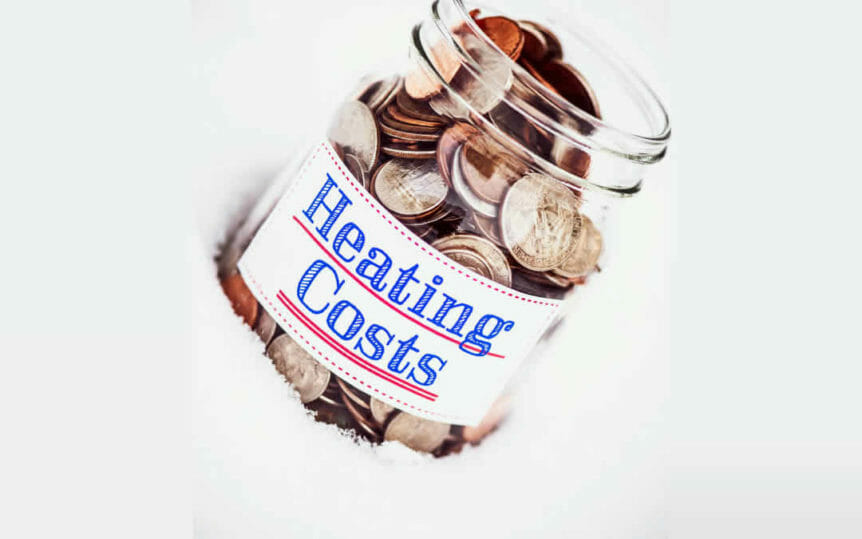
A Heat Pump Will Lower Monthly Electrical Bills
Did you know there’s a highly energy-efficient way to heat and cool your home that costs far less than traditional heating and air conditioning?
No? Well, let us introduce you to heat pumps! These energy-efficient alternatives to traditional furnaces and air conditioners should seriously be considered for heating and cooling homes, especially here in Houston. In heat pump technology, warm or cool air is moved where it’s needed, rather than constantly regenerated, so desired indoor temperatures can be maintained for as little as one-quarter the cost of conventional heating and cooling.
“Heat pumps are especially beneficial in houses with an electrical heating system,” says John Moore Services HVAC Coach, Lewis Yancey. “When the system calls for heat, the cooling system turns into reverse. The compressor outside now acts as a heater so instead of taking the hot air out of your home, it puts it in by compressing the heat and pushing it back inside.”
There are several different types of heat pumps, and each is best suited for use in certain climates. Identifying the right type for your area is the first step in switching your home over to a heat pump.
Different Types of Heat Pumps
Air-Source Electric Heat Pumps
This is the most common type of heat pump and is well suited for the Houston climate. Air-source electric heat pumps dehumidify the air during the cooling process, so you enjoy cooler indoor air with lower energy costs – ideal for our long, hot, humid months. However, air-source electric heat pumps don’t heat efficiently in extreme cold, but that’s not a problem in our climate. Our average cold temperatures are right within this heat pump’s optimal heating range.
“In Houston, if you have electric heat in your home instead of gas, a heat pump can save you a lot of money on your monthly bills,” says Yancey. “An electric heating system uses up to three times the electricity as a heat pump, so switching to a heat pump will save on heating bills. If your home is the right fit for a heat pump, I’d recommend getting one.”
How an Air-Source Electric Heat Pump Works
Like a traditional central air conditioning system, an air-source electric heat pump uses an outdoor compressor unit together with an indoor air handler to deliver warm or cool air. The difference is how the heat pump creates cooled or warmed air on demand. Instead of using a traditional condenser and furnace to cool and warm air, this heat pump uses a self-contained flow of refrigerant which retains or releases heat or cold, depending on the direction of the flow. The warm or cool air is then delivered into your home via ductwork.
When temperatures drop below 40°F, some air-source electric heat pumps use electric heating coils to supplement the heating process. Electric coils aren’t the most energy-efficient form of heating, but in areas where this type of heat pump is popular, the temperatures rarely drop below 40°F. Others use gas-fired furnaces instead of electric coils, which offer energy-efficient supplemental heat in homes with natural gas.
Geothermal Heat Pumps
Geothermal heat pumps have been in use since the late 1940s and have a unique way of delivering warm and cool air indoors. In geothermal heat pump technology, the constant temperature of the Earth itself is used to manage indoor temperatures. According to the Department of Energy, this allows the system to reach efficiencies as much as 300 percent to 600 percent higher than traditional furnaces on the coldest winter nights. If you live in a cold climate with long winters, a geothermal heat pump might be the solution for your home.
How a Geothermal Heat Pump Works
Regardless of the average air temperatures in different climates, the ground a few feet below the surface remains at a relatively constant temperature. So in cold months, the ground temperatures are warmer than the air above, and in warm months, they are cooler than the air above. Geothermal heat pumps use a system called a ground heat exchanger to tap into this constant ground temperature to cool and heat indoor air on demand, and even to provide hot water.
Geothermal heat pumps offer a variety of options to maintain indoor comfort, and the right system depends on several factors, such as the home’s location and size, the ground type and the level of the water table. Geothermal heat pumps are not right for some areas, but for others, geothermal is an ideal low-cost and low-maintenance heating and cooling solution.
Ductless Mini-Split Heat Pumps
Ductless mini-split heat pumps are perfect for specific uses. They’re a good upgrade or add-on in homes with ductless heating systems, such as hydronic (hot water) heat, radiant panels or space heaters. They’re also a good choice for room additions where extending central air ductwork is not feasible. Ductless heat pumps are also ideal for newer high-efficiency homes needing only small-space climate control.
How a Ductless Mini-Split Heat Pump Works
Like standard air-source electric heat pumps, mini-split ductless systems use two main components: an outdoor compressor and indoor air-handling units, which work together to cool or heat air and deliver it to specific areas. Like air-source electric heat pumps, air is cooled or heated using a flow of refrigerant which retains or releases heat or cold, depending on the direction of the flow. But unlike conventional central air systems, ductless systems don’t use air ducts within the ceilings or floors to deliver air indoors.
In ductless systems, the cooled or heated air is delivered via individual air handlers installed within rooms, not through a central air handler and a series of hidden ducts. This makes ductless heat pumps extremely energy efficient and cost effective to operate. You can heat or cool spaces as-needed and even set different temperatures in rooms — all without the energy loss related to pushing air through attic ducts.
Absorption Heat Pumps
This type of heat pump is essentially an air-source heat pump powered by something other than electricity, such as natural gas, propane, solar-heated water, or geothermal-heated water. Since natural gas is the most common power source for absorption heat pumps, they are often referred to as gas-fired heat pumps. Absorption (or gas-fired) cooling units are also available and work on the same principle, but are used for cooling only – a separate heat pump or another heat source must provide heat.
How an Absorption Heat Pump Works
As in standard air-source heat pumps, a self-contained flow of refrigerant (in this case, ammonia) retains or releases heat or cold depending on the direction of the flow, and warms or cools air that’s delivered into your home via ductwork. Absorption systems are common in large industrial or commercial spaces, but they’re becoming a popular choice for larger homes, usually those over 4000 square feet, which need zoned climate control.
In smaller homes, absorption coolers and heat pumps usually only make sense where there’s no reliable electricity source. Since they can use any heat source to operate, they’re an ideal system for rural and remote locations.
Maintaining Your Heat Pump for Optimum Efficiency
Like all heating and cooling systems, proper maintenance is crucial to keep your heat pump system working efficiently. It can cost as much at 25 percent more in energy bills to operate a dirty, poorly maintained heat pump. But keeping one clean and operating efficiently takes just a little time and the savings is well worth the effort.
Dirty filters, coils and fans are the enemies of heat pump efficiency. They reduce airflow through the system, decreases performance, and can damage your system’s compressor. Our heat pump pros recommend that you clean or change the filters once a month at minimum, and clean the outdoor coils whenever they look dirty. It’s also a good idea to occasionally turn off the power to the outdoor unit and remove any clutter from the fan and the coils.
If you aren’t experienced in maintaining and cleaning this type of equipment, or just don’t feel comfortable doing a specific task yourself, a John Moore heat pump technician will be happy to provide a system cleanout and checkup. Even if you handle the monthly maintenance yourself, you should have one of our licensed experts service your heat pump at least once a year to pinpoint any issues and ensure the warranty servicing is completed. We will:
- Inspect ducts, filters, blower and indoor coil for dirt and other obstructions
- Find and seal duct leakage
- Measure air flow
- Measure refrigerant charge
- Check for refrigerant leaks
- Inspect electrical terminals, clean and tighten connections, and apply nonconductive coating
- Lubricate motors and inspect belts for tightness and wear
- Check the electric control to ensure that heating is locked out when the thermostat calls for cooling — and vice versa.
- Make sure the thermostat is working properly
With proper maintenance and servicing, a heat pump will work efficiently and safely for years to provide maximum comfort at the lowest heating and cooling costs possible. Energy-efficient heat pumps are great for the environment and your wallet, so why not make the switch?
